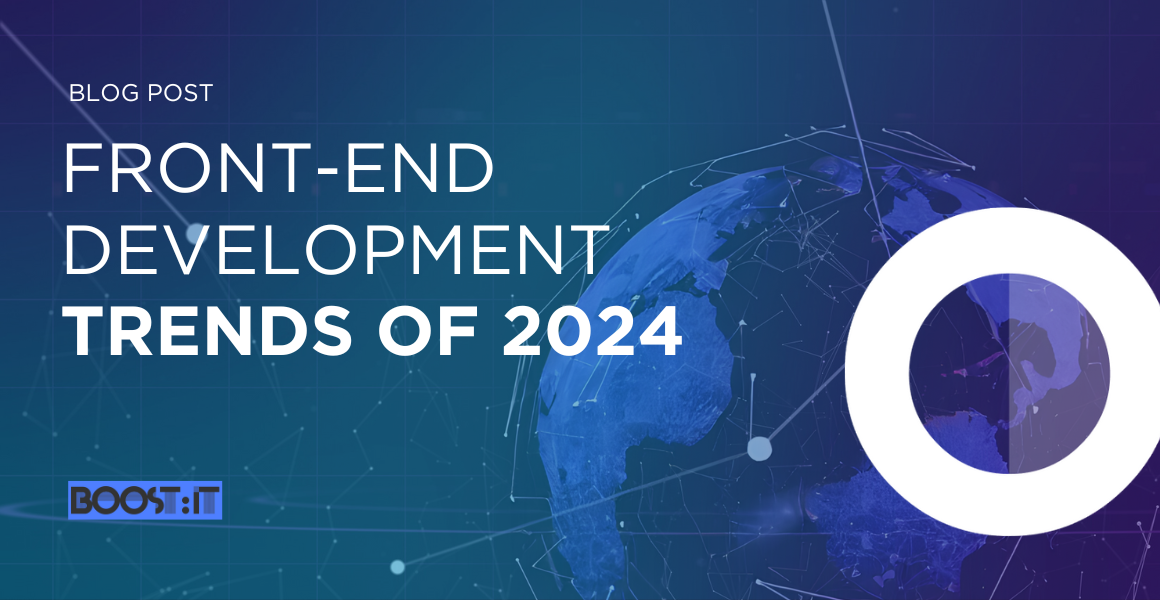

2024.07.19

In 2024, it's essential for senior developers to stay on top of the ever-changing world of frontend development. New tools and methods keep popping up aiming to boost productivity, performance, and user experience. This article looks at the main trends shaping frontend development this year offering insights to help experienced developers keep their edge.
Development Overview: Low-code and no-code platforms are causing a revolution in app development. These tools let developers and non-developers alike build apps with little coding. They use visual interfaces and ready-made parts to make this happen.
Current State: The low-code/no-code trend keeps growing even with some bumps like job cuts at OutSystems. It's popular because it cuts down on development time and reduces mistakes. Forrester thinks the market for low-code development platforms will hit $21.2 billion by 2024. This means it's growing at over 28% each year.
Examples: Used by popular platforms like Bubble, Airtable, and Softr.
Overview: PWAs blend the trustworthiness and abilities of regular web apps with the speed and features of phone apps you download.
Features: They load quick, work offline, send alerts, and give users a cool experience.Impact: PWAs make users more involved and work better on computers and phones. This makes companies like them when they want to give users a smooth experience. New numbers show that big brands saw 68% more people using their stuff on phones because of PWAs.
Overview: SPAs load one HTML page and update content as users interact with the app.
Benefits: They make interactions faster, cut down server load, and boost performance compared to old-school multi-page apps.
Use Cases: SPAs work great for making dynamic and responsive web apps like Gmail, Netflix, and Trello where quick user actions matter. Recent studies show SPAs can cut server load by up to 80%.
Overview: These platforms use AI and machine learning to automate coding tasks letting developers focus on trickier and more creative parts of making apps.
Advantages: They boost efficiency and productivity by cutting down on writing repetitive code. They also help complete code, fix bugs, and even make whole code snippets from descriptions.
Examples: Tools like GitHub Copilot and DeepCode are getting popular because they speed up development. Recent reports say GitHub Copilot has cut coding time by 55% for users.
Overview: AI and machine learning are now part of frontend development more and more. These technologies make work easier by automating boring tasks, like making code and testing.
Examples: Tools like Microsoft's Sketch2Code can turn sketches into HTML code, while AI-powered chatbots make user interaction better by handling questions in real-time. AI-driven personalization has shown to bump up user engagement by 30% on average.
Overview: JAMstack (JavaScript, APIs, and Markup) is now a common way to build fast, scalable, and secure web apps.
Benefits: This setup separates the frontend and backend letting you use Static Site Generators (SSGs) like Next.js and Gatsby. These tools pre-render web pages making them faster and better for SEO.
Adoption: JAMstack's use has shot up, with a 50% increase among developers in the past year.
Overview: TypeScript keeps gaining ground because it helps make cleaner easier-to-maintain code. Its type safety features help catch mistakes making it a top choice for big applications.
Popularity: The growing popularity of frameworks like Angular and React, which work with TypeScript further cements its place in modern web development. A recent survey shows that 72% of developers now use TypeScript for their projects.
Top frontend coders can make sure they're using the newest tech to build apps that work well, grow , and are easy to use by keeping up with these trends. Using cool stuff like low-code/no-code platforms, PWAs, SPAs adding AI, and TypeScript will help them work better and make apps that people like using in 2024 and after. This means they can do more and make users happier with what they build.
2024.12.05
2020.11.07
Discover how our teams can help you. Fill out this form and we’ll be in touch within 24 hours.
© 2025 Boost.IT | By: Buran
This website uses cookies and similar technologies to support and improve the user experience. More information in our cookies policy. Please accept or reject/select your preferences using the buttons below.
We use cookies and similar technologies to ensure the basic functionality of the website and to enhance your online experience. Except for the required system cookies, which are always necessary for the website to function, you can choose to opt-in/out at any time or other categories mentioned below. More info in our cookies policy.